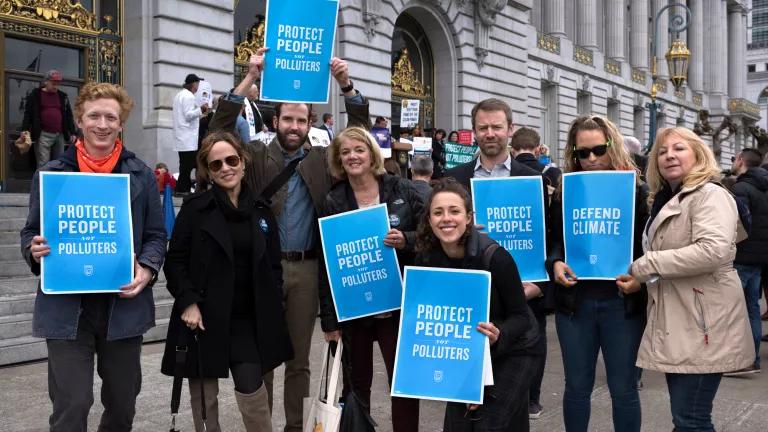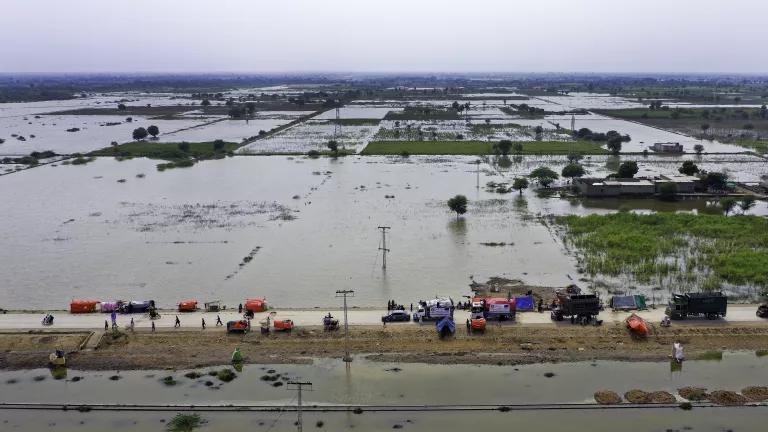Pushing Our Food System to Extremes

Imagine this: Your house gets flooded to the rafters with a hurricane-driven stew of briny water and toxic chemicals, and stays that way for weeks. When you’re finally able to go home, your neighborhood has no power, no street signs, and no place to buy food. The power is eventually restored and your neighbors make their own street signs. But then you wait nine years for a single grocery store to come back. Nine long years.
That’s the scenario residents of New Orleans’ Lower Ninth Ward faced after Hurricane Katrina slammed flood waters through levees in 2005. It’s also one of the most dramatic examples of how extreme weather affects our food system—but by no means the only one. In 2012, for instance, Hurricane Sandy stalled food deliveries to the East Coast, and thousands of New York and New Jersey families in evacuation shelters endured food shortages. In 2011, residents of northern Minot, North Dakota, were cut off from grocery stores after the overflowing Souris River sliced through the town and flooded more than 4,000 homes.
We’ll see more and more of these stories as climate change supercharges extreme weather. In fact, one of the key findings of an authoritative Climate Health Assessment released in April by 13 federal agencies and departments is that increasingly frequent and severe extreme weather will likely slow food shipments and damage supermarkets, limiting access to safe and nutritious food.
The assessment also warns of an increasing risk of food-borne infections like E. coli and Salmonella, which together already sicken more than 1 million Americans a year. Weather disasters commonly cause power outages that make proper food storage and preparation impossible, and it doesn’t take long for food to become unsafe to eat. In just a half-hour of 80-degree weather, the number of Salmonella bacteria on a piece of raw chicken can double.
The effects of climate change on food access and safety could have particularly stark consequences for children. According to both the Climate Health Assessment and a recent issue of the Future of Children, a project of the Woodrow Wilson School of Public and International Affairs at Princeton University and the Brookings Institution, children are particularly vulnerable to food shortages and contamination during and after disasters. For instance, children are more susceptible to dangerous complications of normally mild food-borne illnesses, and early food shortages are thought to contribute to chronic illnesses later in life.
So while the buying panic that happens at grocery stores in advance of big storms has become a running joke, the outlook for our food system under climate change is no laughing matter. To protect our families and communities, we need to make a plan before disaster strikes, and we need to act to reduce the carbon pollution that’s causing climate change.




